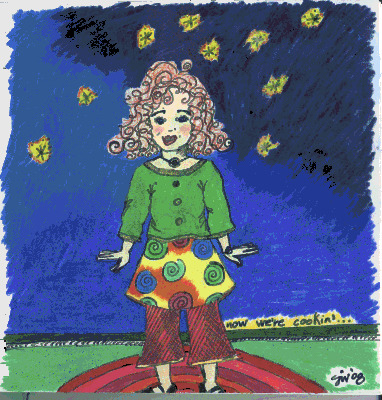youth art month musings:
the importance of art education
February 16th, 2010
This article will make its official debut in the March 2010 of Austin Family Magazine and website. Be sure to pick up a copy at a location near you!
When people find out that I am an art teacher, certain responses are predictable: “Oh, I’m not good at art,” or “I can’t draw,” or “Be glad I’m not in your art class!” These comments are unfortunately common and depending on the situation, I debate internally whether to simply accept their statement as fact, politely encourage them with an optimistic remark or engage in a conversation about their experiences with art. Regardless of my decision, one thing routinely, painfully, becomes clear: Little I say will sway them from their negative opinion of themselves as artists.
Simultaneously, these self-proclaimed non-artists often wax poetic about their desire to be artistic, yearning for that nebulous Art Talent which they themselves never attained. I wonder at what point these people lost sight of their artful lives. Ironically, these folks also speak of few or sporadic art classes and experiences growing up. Or, they refer to art experiences limited to “coloring inside the lines” at the behest of their well-meaning homeroom teacher. In the absence of rigorous and dedicated art education, their idea of art and what art is grew stunted and uninformed.
On the other hand, individuals who actually had art class in school on a regular basis confide in me that they view their artistic ability as average or above. Furthermore, if they connected even only a little with their art teacher, they were deeply and positively impacted in a constructive and permanent way. Art is seen as something more than the ability to draw; art is a lens with which they view life. Over and over I hear from people I meet, see from students I teach, that art is the glue that connects the many different parts of their lives. Artful or creative thinking adds interest and innovation in an otherwise dull day at the office. Some days I am certain that it is my art class that made a particular student rise out of bed and come to school.
There is something special about arts education during the formative years of youth. More than just an “extra” in a child’s day, art is an essential component in developing a child’s ability to see the world around her in a critical, qualitative, and affective way. More than just learning how to draw, art education teaches a child to see, to perceive and to represent her environment, ideas, and responses in a variety of ways. More than just creating a sculpture or painting, art education compels a child to be in touch with her emotional and intellectual motivation for making certain aesthetic choices. The young artist must articulate what is often more easily represented with images, colors, textures or form.
Furthermore, research continues to show us that students receiving a fine arts education perform higher on standardized tests such as the SAT, enter the working world better equipped to meet the demands of 21st century employers and support the arts as an economic force in their communities.
Texas for The Arts lists in a PDF file no fewer than 20 reasons as to why Texas’ economy depends on the arts and the creative sector.
The Texas Commission on the Arts provides data on the future of arts education (visual arts and performing arts) as seen through the eyes of CEOs and other business leaders. Repeatedly we are being forewarned that creative thinking, innovation and communication are qualities needed for the 21st century workforce, and that exposure and interaction with the arts is one of the main components of a 21st century education.
The Texas Art Education Association features on its website compelling work by Elliott Eisner entitled “Ten Lessons the Arts Teach.” It is on display in my art room, shared by my peers in art and art education, read to my students and shared with parents and is an invaluable reminder of why art education and Youth Art Month are critical components in the whole education of any child. For the parent, grandparent, educator or advocate, it is invaluable articulation of why art education is important in our schools. Eisner’s list empowers those who wish to seek, protect and demand more art instruction in schools and communities.
TAEA also promotes March as Youth Art Month on its website, and provides resources for teachers and parents interesting further promoting art education year round. Students from around the state of Texas have an opportunity to create flags promoting Youth Art Month. Winners are featured on the website. The theme for Youth Art Month for 2010–2014 is “Art Shapes the World.”
The Council for Art Education, the official sponsor of Youth Art Month, highlights many of the benefits of art education and quality art programs in schools. Enhanced self esteem, creative problem solving, and appreciation of others are cited as some of the many benefits of art education. Youth Art Month, observed yearly in March, is a time for appreciation of art and art programs locally, regionally and nationally. Anyone can contribute to the month’s events and your local art teacher is a great place to start when seeking art appreciation opportunities. Through consistent and dedicated support of art education,parents, grandparents, teachers and schools can make a positive difference in the artful lives that children lead.
I know that even as an impassioned art teacher, there is little I can do to change a person’s experience with art in the past. Regardless of where a person might fall on the creative curve, there is one thing that anyone can do: Ensure that every child’s educational future consists of rigorous, extensive and protected arts education.










